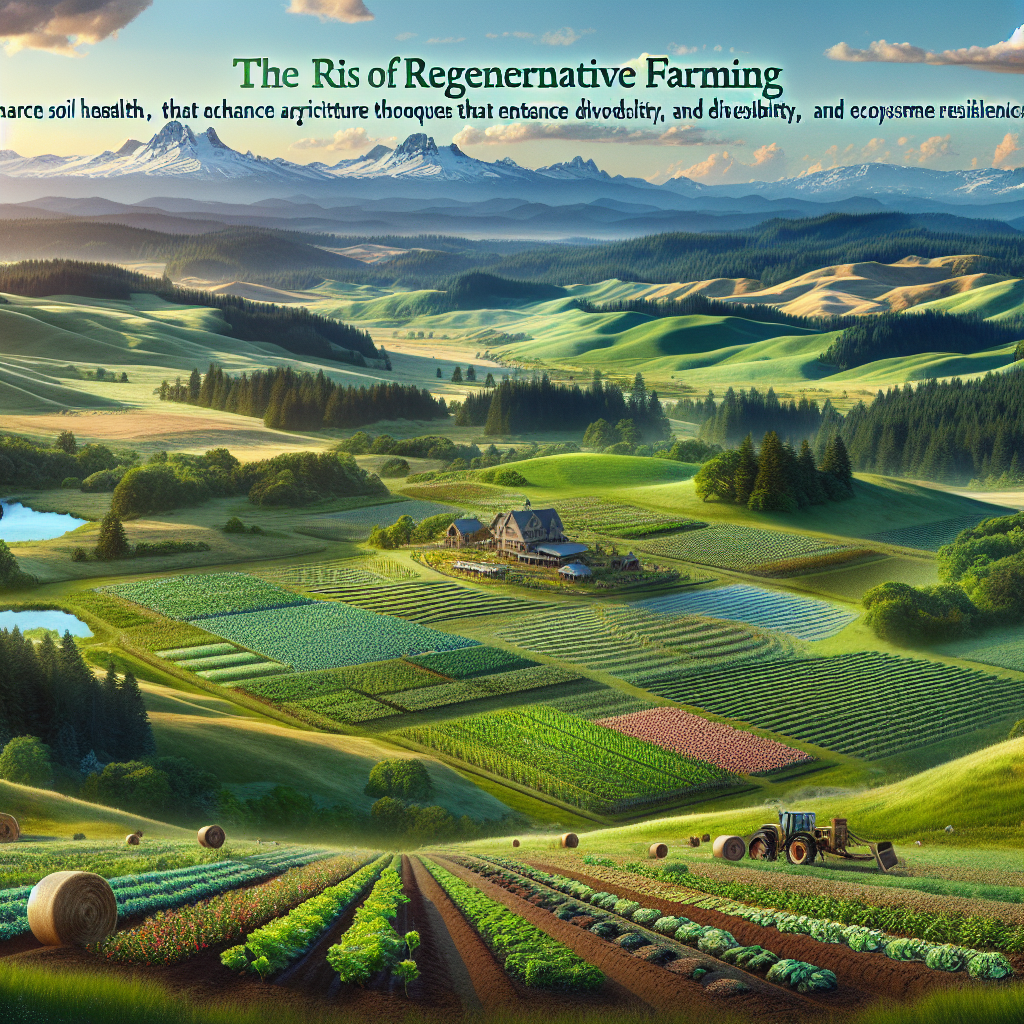A Seed of Change: Regenerative Farming Blooms in Oregon
Just as every towering Douglas fir in the Cascade Range has a story rooted in a tiny seed, so too does the rise of regenerative farming in Oregon. A tale of innovation, community and heart, this movement is breathing new life into the state’s agricultural landscape and giving Oregonians a fresh take on what it means to care for the land we love.
The Turning Soil: From Conventional to Regenerative
Picture yourself wandering through the Farmers Market in the historic Pearl District of Portland on a crisp Saturday morning. You’d probably notice a growing number of stalls showcasing the bounty of regenerative farms. You might scratch your head and wonder: what’s all this hoopla about regenerative farming?
Simply put, regenerative farming is a sustainable agriculture practice that focuses not just on growing crops, but on improving the soil and creating healthier ecosystems. It stands in stark contrast to conventional farming, which often involves heavy use of chemicals, tends to deplete the soil, and contributes to greenhouse gas emissions. That powerful shift from conventional to regenerative is as transformative as swapping out a rainy, cloud-covered Oregon winter day for the soul-warming sunshine breaking through Clark’s Point at sunrise.

Tilling New Ground: Oregon’s Pioneers of Regenerative Farming
Nowhere is the spirit of this movement more alive than on Oregon’s many family-run regenerative farms. Take A2R Farms in beautiful Central Oregon, for instance. Here, the dedication to regenerative farming isn’t just a philosophy, it’s a way of life. Cover crops, minimal tilling, and strategic grazing all play crucial roles in restoring the soil, and it’s not uncommon for farmers to brag about their worm populations – a surefire sign of healthy soil.
It’s the same story over at Seely Mint farm in Clatskanie – a small town nestled between the coastal rainforests and the rocky banks of the Columbia River. Not only is this 4th-generation family farm one of the largest organic mint growers in the country, but they’re committed to nurturing their soil back to health through the practice of regenerative farming.
The Harvest: Benefits of the Regenerative Farming Movement
The impact of regenerative farming isn’t just visible in our soil or the deliciously fresh Oregon-bred produce we enjoy—it flows through the veins of our local communities, too. For starters, these farming practices sequester carbon from the atmosphere and, considering the “great conflagration” of this past summer’s forest fires, any contribution toward combating climate change is a welcome relief.
Also, regenerative farming promotes biodiversity, leading to more resilient local ecosystems. Remember how odd it felt when the Portland Saturday Market had to close during the pandemic, and you couldn’t find any of your favorite vendors? Well, imagine that same eeriness affecting our local wildlife because we didn’t have the variety of plants essential for their survival.
And let’s not forget about the economic benefits. Sure, anyone who’s tried to find parking downtown during a festival knows what a big deal farming is to Oregon’s economy, but regenerative farming is proving to be a game-changer. Consumers increasingly crave locally-grown, sustainable produce, keeping the dollars in our state and boosting local economies.
The Road Ahead: The Future of Regenerative Farming in Oregon
So, what does the future hold for regenerative farming in Oregon? Well, about as certain as predicting when the next Cascadia Subduction Zone quake will hit. That’s to say, we don’t entirely know, but one thing is for sure: the potential is enormous.
From the lush Willamette Valley wineries using biodynamic practices to the golden wheat fields of the rural east, Oregonians are embracing this sustainable way of farming. Schools like Oregon State University are further pioneering research into sustainable agriculture, ensuring we stay at the forefront of the regenerative farming movement.
If you’ve never thought much about where your food comes from before, let the rise of regenerative farming in Oregon be your wake-up call. Next time you’re meandering through your local farmers market or eating a crisp apple from your neighbor’s backyard, take a moment to appreciate the labor, love, and stewardship of the land that helped put that food in your hands.
The roots of regenerative farming run deep in Oregon, and their fruits are ours to enjoy. Here’s to embracing what can only be described as the “Oregon way”— committed to nurturing, preserving, and cherishing the land we call home. Now, isn’t that worth raising a glass (preferably of Pinot Noir from a regenerative vineyard) to? Happy eating and cheers to the healthier, more sustainable future taking root in our backyard.
